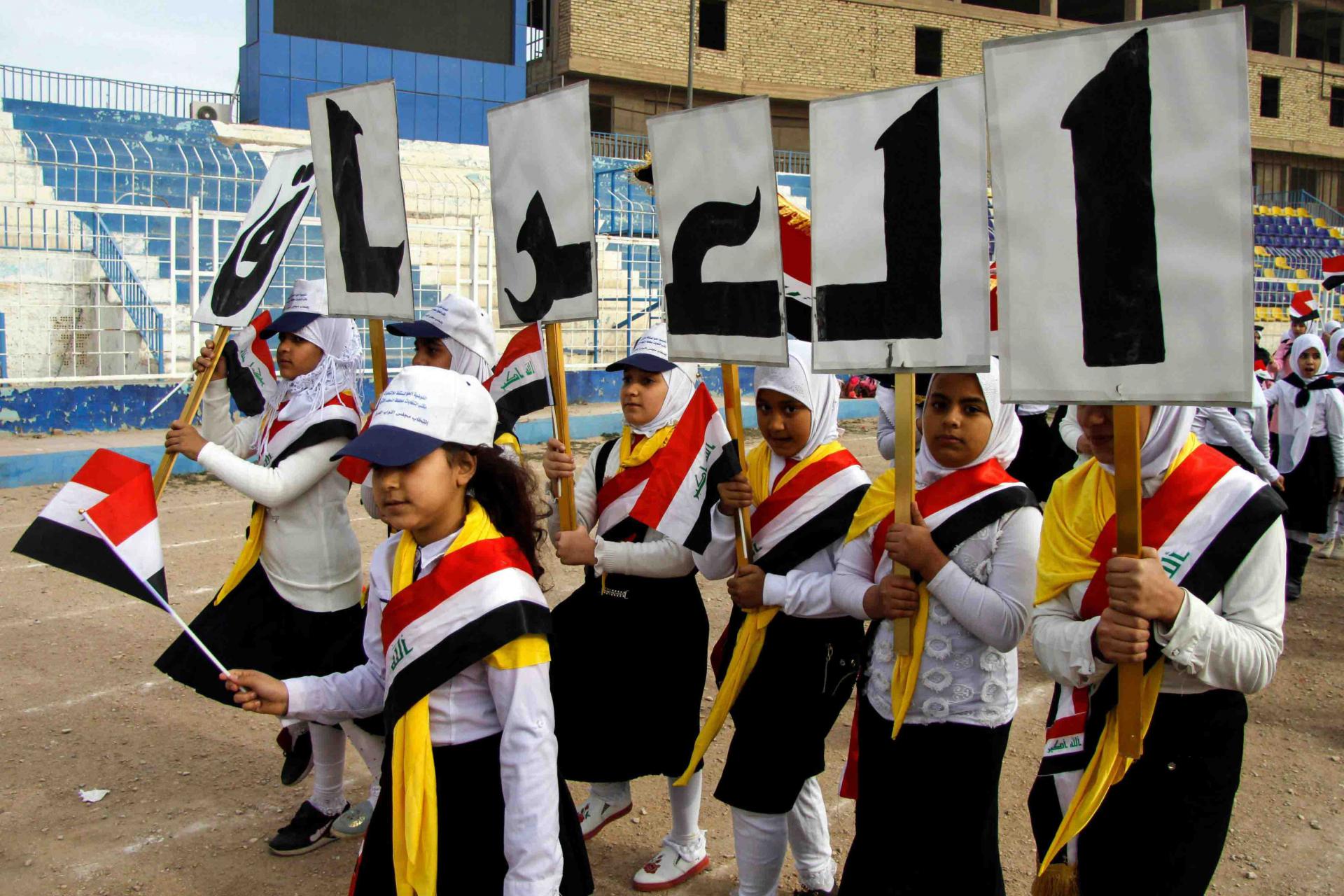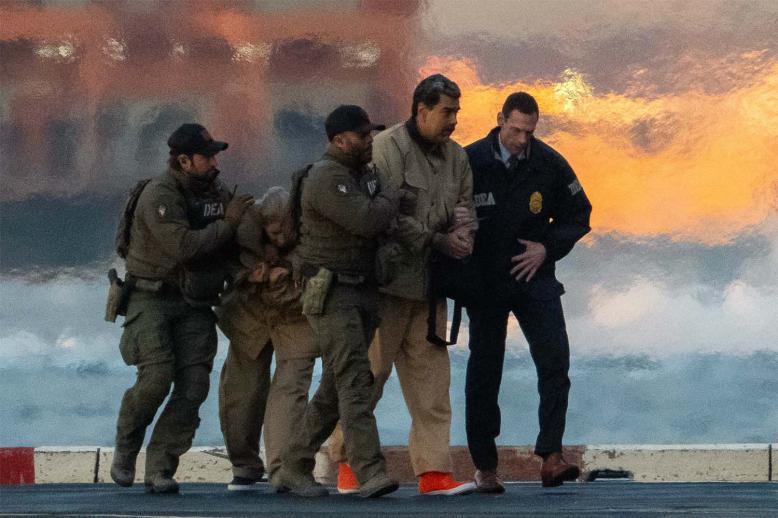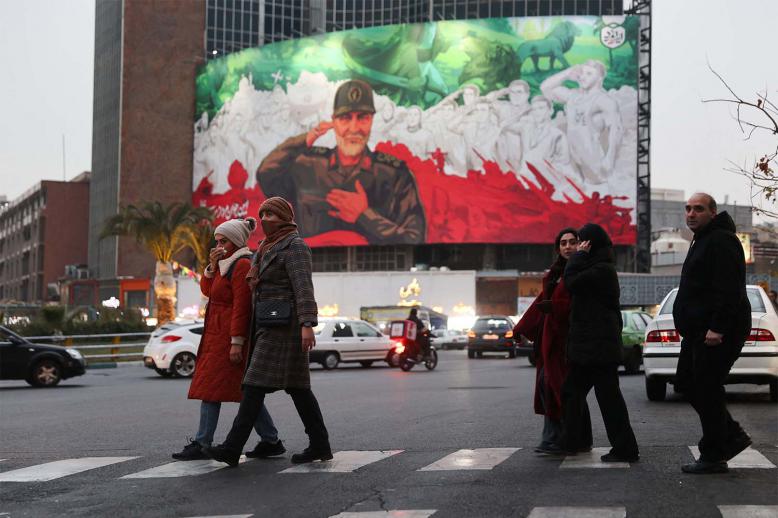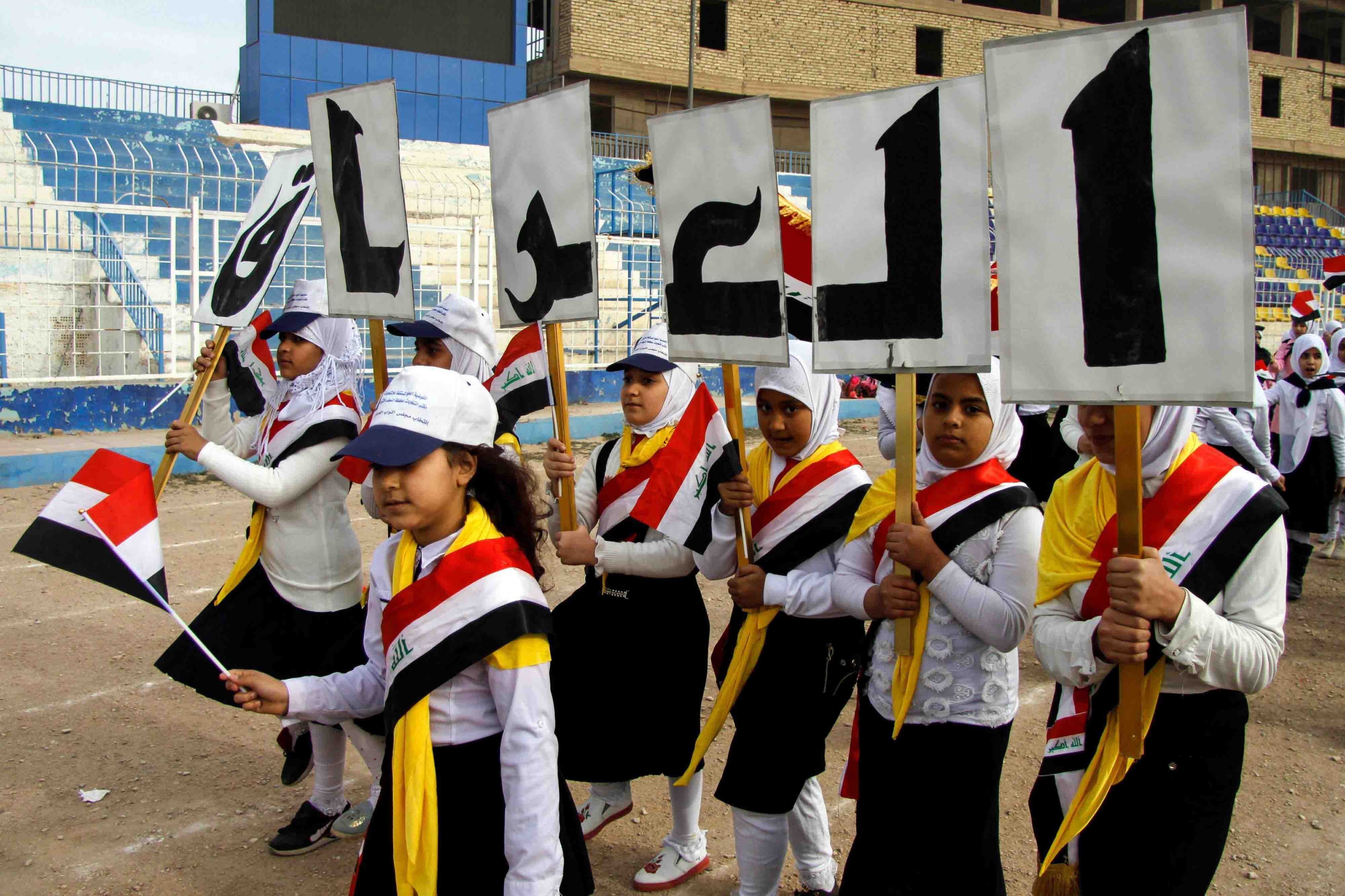What problems face Iraqi education?
Education in Iraq is a hotly contested subject. The legacy of the post-2003 era, in particular, is that schools have become a focus for social, sectarian, and political conflicts. From child education all the way to the university level, the curricula and teaching methods have proven inadequate, outdated, and controversial. In this climate, the true meaning of education has been lost. The extent to which government policies and school practices provoke debates, protests, disputes, and public disapproval indicates that Iraq suffers a crisis of pedagogy and control.
Today, Iraqi young people are not learning! What is going on? Perhaps schools are not learner-friendly, or to put it in another way, schools fail to teach in ways that help young people to learn. Despite modern advances in methods of education, Iraqi teaching remains dull and removes the fun in learning. Generally, its design wrongly insists on memorising facts instead of offering meaningful learning, training, and practical knowledge. The student has become a slave to the practice of memorisation that, from its inception, kills any sense of creativity and discovery. In contrast, teachers abdicate their proper role by failing to take students beyond mere memorisation practice and trying only to reach the end of the lesson — which makes the teaching function worthless and blatantly neglects the fact that the human (and particularly the Iraqi) mind generally performs quite well at meaningful learning compared to rote learning.
The Iraqi education system is failing
It seems apparent that the now-established education system cannot meet the needs of our disjointed society — a society that exists in a state of constant conflict. Let's examine the problems that prevent the Iraqi education system from achieving its objectives.
- 1.Organisational structure
The Iraqi educational regime is characterised by a centralised hierarchy of power, where the right to issue decisions and instructions is placed at the very top of the pyramid and, specifically, only in the hands of the minister. The Ministry of Education Law of 2011 affirmed that all decisions, orders, and instructions are issued only by the Minister. It allows for no dispersal of powers to managers at the middle and lower levels of the pyramid.
This kind of autocratic decision-making creates massive communication and operational problems and undercuts stability by preventing successive ministers from implementing the strategic actions of prior ministers.
- 1. Infrastructure
Many schools, particularly those in rural and high-poverty areas, are plagued by decaying buildings that threaten the students’ health, safety, and learning opportunities.
Iraq has more than 15 thousand primary schools, but 35% of these schools do not have their own building. Of Iraq’s more than 4 thousand intermediate level schools, 30% do not have their own dedicated building, and of the more than 2 thousand secondary schools, 30% lack their own dedicated facilities. This leaves a deficit of more than 8,500 school facilities at all levels. Further, more than 4500 primary school buildings need rehabilitation, as do 1280 secondary school buildings; more than 1800 school buildings are entirely inadequate. Rural areas suffer from a severe shortage of schools, teachers, and such basic services as electricity, water, and other operational supplies. In addition, while schools in cities have up to 24 classrooms, rural schools have only up to 6 classrooms.
These deficits have contributed to reducing the number of working hours in Iraqi schools, where students receive instruction for only 3 to 4 hours a day compared to students in America, China, and South Korea, who receive 8, 10, and 14 hours, respectively.
All of these factors have negatively affected the Iraqi educational process and its outputs.
The government urgently needs to address the lack of adequate infrastructure in four ways:
1. Building new schools. Although the government embarked on a large-scale project to build hundreds of schools, corruption siphoned off most of the money.
2. Leasing or renting private buildings. This offers a practical short-term solution and an acceptable alternative fix.
3. Rehabilitating schools that have fallen into disrepair.
4. Expanding overcrowded schools to provide adequate learning space.
- 1.Teachers
Of Iraq’s more than 394 thousand teachers, only about 292 thousand are academically qualified, while some 100,000 teachers have outdated knowledge and need retraining and rehabilitation. A UNICEF study on education in Iraq shows that the participation of academically qualified teachers in primary and secondary education has dropped by 3 to 4% in 2016.
The government’s failure to effectively supervise teachers — to hold them accountable for their ineffective teaching, poor relationships with students, and neglect of duties — has become a severe problem. In 2012, the Iraq Instructional Survey — Maharat revealed that the inadequate performance of teachers has left Iraqi students lacking in basic reading and math skills and, most importantly, problem-solving skills.
The problem is not in the ratio of students to teachers. The ratio is 24 pupils per teacher in the kindergarten stage, 16 pupils per teacher in primary school, 17 students per teacher in the intermediate grades, and 17.3 pupils in secondary school. Instead, the weakness of the educational system lies in its adoption of outmoded teaching and instructional methods, and its failure to adequately train teachers.
- 1.Quality Control
Iraq lacks a comprehensive The Iraqi education system lacks a comprehensive system for gathering and assessing information about how its school system performs. The Directorate of Statistics still uses an antiquated method for collecting information and cannot diagnose or solve problems due to the absence of research and diagnostic studies (longitudinal and cross-sectional). Additionally, the lack of a comprehensive system for assessing students, teachers, and school principals contributes to the problems of a failing system.
Another obstacle to improving its quality of education arises from Iraq's absence from international assessment tests, such as the PIRLS test (Progress in International Reading Literacy Study) for reading and writing and the TIMSS test for mathematics, science, and other technical subjects (Third International Mathematics and Science Study). The country needs a way to identify and assess its objective educational strengths and weaknesses. The PIRLS and TIMSS tests offer a means for administrators to understand how well the system performs by comparing its students to their global peers.
One commonly heard complaint about the Iraqi education system is that it lacks stability. Beyond the pressure to catch up to the rest of the world, this turbulence may arise from a tinge of institutional corruption. While the curriculum changes, teachers’ knowledge does not, which creates a problem in delivering the material to students. To date, we have not seen information that would explain why the educational system changes so frequently and what negative aspects of the previous curriculum led to such change.
- 1.Days per year in school
The Iraqi school year is one of the shortest in the world: students spend only 151 days in school each year — 29 days less than students in the countries of the Economic Cooperation Organization, which amounted to 180 days a year. Compare that to the 210 and 220 days required in Japan and South Korea, respectively. Although the number of school days per year is not a determining factor in student performance, Iraqi schools largely lack extracurricular activities, including sports, creative arts, academic enrichment programs, outdoor education, test preparation, and community outreach. Iraqi students lack nearly all such opportunities.
- 1.Rates of enrolment and dropping out
The primary school enrolment rate in Iraq is 91%. This ratio decreases significantly to reach 36% in intermediate schools and drops further, to 18%, in secondary schools. The proportion of students entering universities is only 14%. Thus, of the 91% who enrol in primary school, 73% drop out.
According to UNESCO, UNICEF, and the World Bank, the highest dropout rates are among females; 11.4% of females drop out, compared to only 5.4% of males. Thus, the ratio of male to female students in intermediate school has changed to 142:100. As a result of this number of students dropping out and repeating school years, Iraq lost nearly 850 million dollars in 2016 — in one year.
In 2016, students’ failures in exams led to more than 107 thousand students who were older than their peers in class. In the same year, the number of displaced children who could not enter school reached 355,000, most of them girls. Within the age group of 10- to 14-year-old children, 1 in 5 did not attend school. Thus, it seems little wonder that, compared to countries in the Middle East and North Africa, Iraq has among the highest percentage of adults who can neither read nor write.
- 1.Spending on education
Iraq spends less on education than any country in the world. According to OECD data, Luxembourg spends $21320 per student, while Indonesia spends $1209 on each student. In Iraq, spending, at best, falls to around $600 per student.
In 2016, Iraq allocated 5.7 billion dollars for education, but 91% of the education budget goes to cover salaries, while the investment in education has been comparatively negligible, amounting to nearly 600 million dollars, and most of that has been plundered.
- 1.Overstretched educational system
Iraq’s schools have made do by employing fewer teachers, dropping subjects from the curriculum, and asking pupils to buy their own books, as the head-teachers struggle to cope with inadequate budgets. In an overstretched educational system that places little premium on students' ability to think for themselves, private tutors help students to memorise the contents of the curriculum. They provide model answers that the children are encouraged to memorise and regurgitate on their answer sheets. Schools have focused mainly on a superficial approach to learning, relying on having students perform rote memorisation and routine procedures; teachers have mostly avoided using the deep approach to allow students a thorough understanding of their subjects.
- 1.Rote learning stifles meaningful learning
The learning system in Iraqi schools forces students desperate to get a seat at, say, medical college, to fully memorise their textbooks. This system has produced abysmal results. For example, in 2016, the number of students who got marks of 100% on their exams was 1158, while the number of students who earned marks of between 95 and 100% was 11327. This huge number of high marks has clogged the admission systems of the medical colleges. However, and far more damaging, this system’s shallow view of intellectual endowment created students completely fixed on achieving full marks through memorisation. For students, any departure from a perfect mark, even by 0.1%, constitutes a disaster, as this represents the loss of any opportunity to become a medical doctor or a pharmacist and, instead, facing a future of despair and ignominy.
Challenges to the Education System
What challenges face the Iraqi education system? Here we list its ten most challenging problems:
- 1.The qualities valued in modern economies — such as initiative, creativity and problem-solving abilities — are in short supply.
- 2.Dependence on rote learning fails to instil the ability to think critically, a prerequisite for progress and innovation.
- 3.Uninteresting, unexciting, and badly designed curricula.
- 4.Overcrowded schools.
- 5.Inadequate school buildings.
- 6.Reliance on private tutoring.
- 7.Overstretched and underfunded national systems.
- 8.Individual and collective cheating.
- 9.Poorly trained teachers.
- 10.The exam-driven nature of the system pressures teachers to pass as many students as possible, regardless of attainment.
1Emeritus Professor, University College Dublin, Ireland
2Lecturer, University of Mustansiriyah, Iraq







